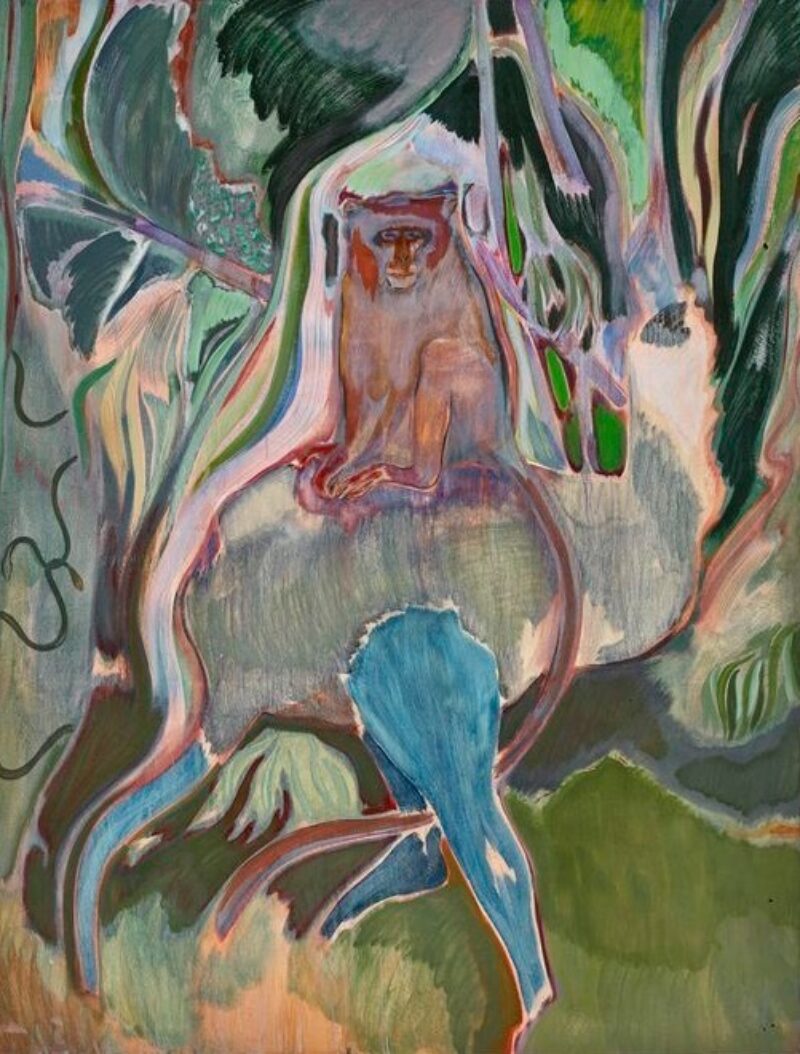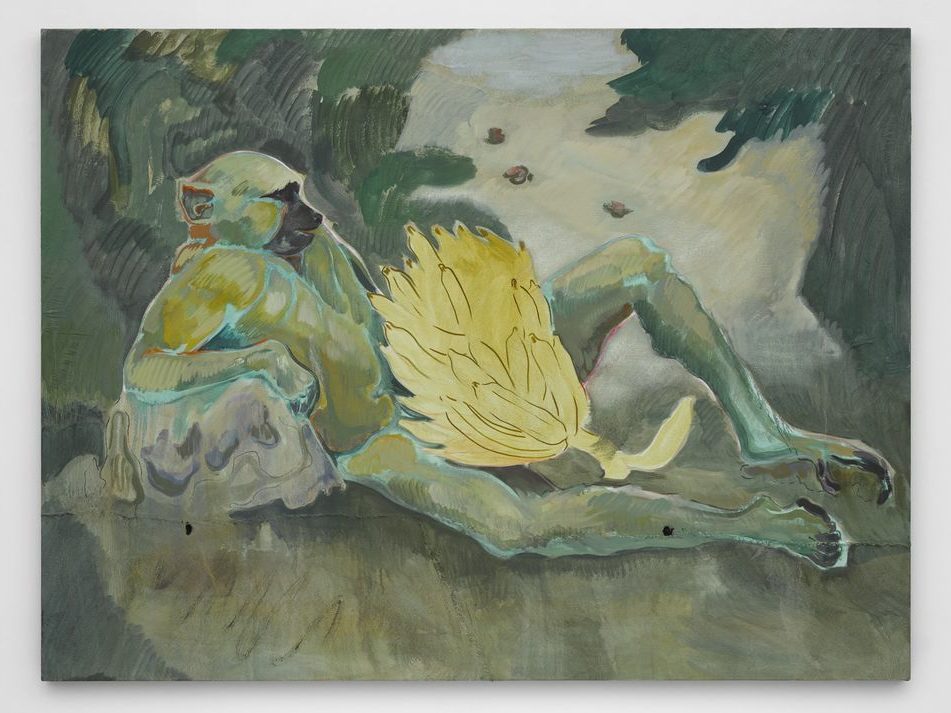Inspired by Michael Armitage's multilayered works, our workshop tutorial will show you a simplified technique that allows you to achieve amazing effects of image and color overlay at home.
His name is Michael Armitage, and he is 36 years old. His mother comes from Kenya in East Africa, and his father is from Great Britain. Armitage grew up in Nairobi in Kenya and later moved to London to study art. Today he divides his time between the two cities and is one of the world’s most exciting contemporary artists.
Michael Armitage’s motifs and painting techniques:
The artist finds the inspiration for his paintings in his African homeland, where he closely observes its diverse natural environment, as well as its animals and people. He records what he sees in sketch books; later, back in his London studio, he creates his colorful paintings, which he paints not only on canvas but also lubugo. Reddish-brown in color, lubugo is a Ugandan material made from ficus tree bark. The material’s surface is characterized by imperfections. Some of the artist’s work have large holes, while others reveal crude stitching where Armitage has sewn together several pieces of lubugo cloth.

Here we see a monkey sitting on an ostrich’s back amid a colorful tropical landscape. Can you recognize the bird’s long blue neck? Its head is hidden in the tall grass. The artist paints with dynamic, visible brushstrokes. He works in oil paint, which he applies in several thin layers, which makes the paint appear translucent.
Motifs often overlap in Armitage’s paintings, such as in this work:

If you zoom in on the image, you will see that different motifs are superimposed over the mountainous landscape. On the picture’s left side, you will notice the outline of a huddled figure who appears to float above the landscape. In the lower left corner, you can spot another head, above which appear a small monkey and a tree branch.
By superimposing layers of paint and various motifs, you can bring together very different figures, objects and landscapes in your own pictures and depict them anew. This tutorial will show you how.
We will demonstrate a simplified technique here, one that will show you how to create amazing effects by superimposing layers of paint and motifs. Enjoy!
Required materials:
Large format construction paper (120gr)
White copy paper
Image templets (photocopies or pictures from newspapers)
Wax crayons
Ballpoint pens
Masking tape
Watercolor paints
Paint brushes
A container of water
Let’s go!
Now it’s your turn! We look forward to seeing your work! Share it with us at #hausderkunst and #atelierHDK on social media or email us an image of your picture to atelier@hausderkunst.de
Anne Leopold is in charge of the studio at Haus der Kunst.
